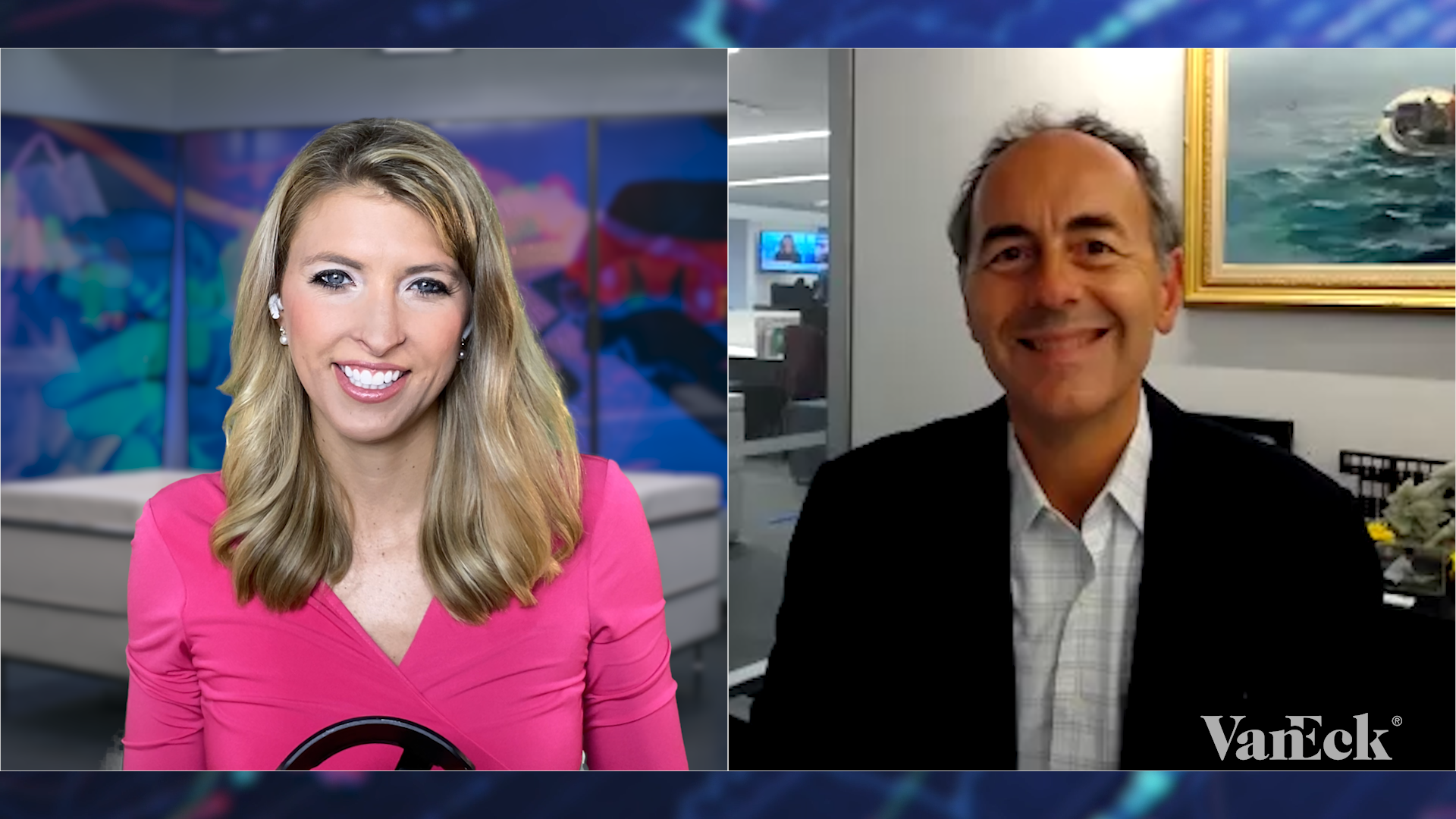Navigating the Market: Opportunities in the Breakage
07 April 2020
Watch Time 6:37
Jenna Dagenhart: Hello and welcome to Asset TV. In addition to the human toll, the coronavirus pandemic has had a severe impact on the markets. Here to share his outlook is Jan van Eck, CEO at VanEck. Jan, thanks for being with us.
Jan van Eck: Thank you.
Jenna Dagenhart: Jan, what can we learn from China here, and what is the latest data telling us?
Jan van Eck: We started this period of uncertainty in early March, and I said at the time I thought it would last until mid-April. That seems to be still a good timeframe. We'll learn not just about how bad the recession will be, because we're going through a global recession, but also the pace of recovery. That's what's really important. We know this is going to affect the U.S. through the summer. The question is, by year end, are we going to be back to prior year levels, or are we still going to be struggling?
China gives us some really early data on that. We just got the March data. Their PMIs were both solidly over 50, which is great—both services and manufacturing. But their traffic is still at about 90 percent, and their electricity is still at about 90 percent. You'd still call that recessionary levels, but that's about a month and a half afterwards. The early signs are, the direction is right, but the uncertainty is still there. And I think that'll still be there for the markets, at least through mid-April.
Jenna Dagenhart: How are you using commodities as indicators of economic activity?
Jan van Eck: Well, I do think, since this is a global recession and China is 20 percent of the world economy—which wasn't the case over the long, long time—that commodity prices can be a relatively good indicator, just on how basic activity is happening at the industrial level. I like to look at copper prices, which fell from about $2.50 down to almost $2.00, now at $2.22. That's showing us signs of bottoming. Oil is a little bit tougher because of the big OPEC price war that's going on at the same time. But Brent [crude] is at $26 [per barrel], so I look at that to be a bottoming indicator as well.
Jenna Dagenhart: This is the fastest decline ever. How does today's market compare to historical drawdowns?
Jan van Eck: Well, we all know this is the worst stock market fall in history. But to me, it has really thrown up some opportunities that I didn't even think would exist when this period of uncertainty started. In other words, the damage was so great, there was breakage.
So what are the things that I like to look at as far as buying during this time period? I think, obviously, the fixed income markets fell apart, from munis to investment grade to high yield. Even though the [Federal Reserve] buying has caused some price recovery, I think there are still some really good opportunities there. High yield interest rates are as high as they've been, pretty much over the last 20 years, except for the 2008-2009 financial crisis. So, that's number one.
Number two, financial stocks traded for a while below tangible book value. Now, if people can't pay their bills or their loans, of course, there'll be some damage to that book value. But—you know, they say they don't ring the bell—that's kind of a bell ringer for me.
Also, and this is a little bit more controversial, but oil below $30 per barrel is just not sustainable for a lot of countries. Those are the things we're like, wow, maybe those things are worth looking at, even in this period of uncertainty.
Jenna Dagenhart: What's your outlook like for gold?
Jan van Eck: Our outlook turned positive last summer, the summer of 2019, because gold is a monetary asset. It's driven by interest rates, but sometimes you can look to technicals, and the technicals really broke out. We said last summer that gold's in a bull market, and gold bullion indeed has been up over the last year. We expect a multi-year bull market.
I think what has disappointed some investors is gold mining shares—those shares of gold mining companies—which fell during this “breakage”, like I'm calling it. What we point out, too, is in 2008-2009, the recovery of gold bullion and gold mining shares actually was faster than the overall market. So, we think that's still a potential. We would definitely say that we're not out of the woods as far as a depression is concerned, even though the risks are low, so it's not a bad time to own a hedge in your portfolio.
Jenna Dagenhart: What do you think the biggest risks are moving forward?
Jan van Eck: One has been taken away, which is the risk of government inaction. In the Depression, what made that so bad was that the government raised interest rates during that time period, instead of lowering them and acting as a backstop. That risk is kind of taken off the table, but we just don't know the pace of recovery. The real risk is that all of us have changed our behavior and that certain businesses are permanently damaged, which means it would take years, not quarters, to get back to prior economic growth.
As I said, I think late April, this period of uncertainty will end, and that's when you can have a little bit of a higher conviction. I kind of feel like it's too late to sell, and that is one thing I've been saying. If you think this is only going to be a recession, definitely start adding to your exposures now.
Jenna Dagenhart: Jan, thank so much for your time and your insight.
Jan van Eck: Thank you. And one thing I wanted to remind people is that we update the China statistics on our website every month, as this saga continues. So, vaneck.com is a good place to look at for subscribing to updates.
Jenna Dagenhart: Certainly, yes. Anyone can go to vaneck.com/subscribe for more insights from VanEck experts. That was CEO Jan van Eck. I'm Jenna Dagenhart with Asset TV.
Related Insights
01 September 2023
09 September 2021




